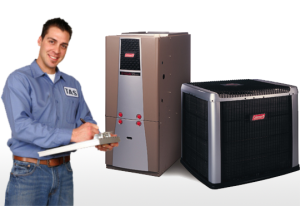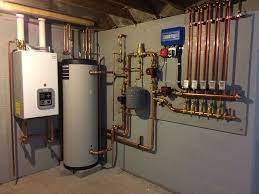Tips For Maintaining Your Home Heating Oil Burner in Long Island
An oil burner is used to heat the oils with at a lot of different levels. It not only heats oils but also diesel fuels and the other similar fuels. A fuel is something that is atomized into a fine spray that is usually put by forcing the fuel under pressure through a nozzle that helps in giving the resulting flame a specific flow rate, and the angle of spray and pattern. This used for heating your home and keeping it warm in the cold winter season.
 A home heating oil burner is something that you don’t think much about until it just starts giving problems. That is why a regular oil furnace and its maintenance is very important in this perspective. While having the furnace, check it at least once a year by a professional serviceman. This way, you can be ensured that the unit keeps running when you need it the most.
A home heating oil burner is something that you don’t think much about until it just starts giving problems. That is why a regular oil furnace and its maintenance is very important in this perspective. While having the furnace, check it at least once a year by a professional serviceman. This way, you can be ensured that the unit keeps running when you need it the most.
Now, this article is about how to maintain your home heating oil burner. Keep reading for the oil furnace checklist that includes certain tasks which can be done by yourself, and the others can be handled professionally.
A regular professional check up is important for an oil burner if you want it to be long lasting. Apart from regular maintenance, below are a few things that you can do to make sure that the unit is running smoothly and is in the top condition.
Here’s the checklist for home heating oil burner maintenance:
- Safety First
- Turn off the power to the burner.
- Shut off the oil supply valve.
- Visual Inspection
- Check for any visible signs of oil leaks.
- Inspect the burner for any soot or debris buildup.
- Examine the flue pipe for any blockages or signs of wear.
- Clean the Burner
- Remove and clean the burner assembly.
- Clean the combustion chamber and remove any soot or debris.
- Clean or replace the burner nozzle.
- Replace Filters
- Replace the oil filter.
- Check and replace the air filters if necessary.
- Check the Oil Tank
- Inspect the oil tank for any signs of rust, corrosion, or leaks.
- Ensure the tank vent is clear of obstructions.
- Examine and Clean the Electrodes
- Check the spacing and condition of the electrodes.
- Clean the electrodes to ensure proper ignition.
- Test Safety Controls
- Check the operation of the safety shutoff valve.
- Test the high-limit control and the low water cut-off.
- Ensure the flame sensor is functioning properly.
- Adjust the Burner Settings
- Adjust the burner’s air-to-fuel ratio for optimal efficiency.
- Set the burner combustion air correctly to ensure complete combustion.
- Inspect the Fuel Supply Line
- Check the fuel supply line for any cracks or signs of wear.
- Ensure the connections are secure and free of leaks.
- Check the Thermostat
- Verify the thermostat is working correctly.
- Calibrate the thermostat if necessary.
- Check the Ignition System
- Test the ignitor and ensure it’s functioning properly.
- Replace any worn or damaged components.
- Test the Burner Operation
- Turn the power back on and test the burner.
- Observe the flame to ensure it’s burning cleanly and efficiently.
- Listen for any unusual noises indicating potential issues.
- Check Exhaust and Ventilation
- Ensure the flue and chimney are clear of obstructions.
- Verify proper venting to prevent carbon monoxide buildup.
- Perform Efficiency Test
- Use a combustion analyzer to test the burner’s efficiency.
- Adjust the burner settings based on the test results for optimal performance.
- Final Inspection and Cleanup
- Inspect all components to ensure everything is reassembled correctly.
- Clean up any oil spills or debris around the burner area.
- Dispose of old filters and used oil properly.
Towns we service
Nassau County
- Town of Hempstead
- Town of North Hempstead
- Town of Oyster Bay
Suffolk County
- Town of Babylon
- Town of Brookhaven
- Town of East Hampton
- Town of Huntington
- Town of Islip
- Town of Riverhead
- Town of Shelter Island
- Town of Smithtown
- Town of Southampton
- Town of Southold

